
magpie
"Pica. rustica hudsonica. Lustrous black, with green, purple, violet, and even golden iridescence, especially…

Long-crested Jay
"Cyanocitta stelleri macrolopha. Long-crested Jay. Upper parts sooty umber-brown, with a faint blue…

Canada Jay
"Perisoreus canadensis. Canada Jay. Whiskey Jack. Moose-bird. Gray whitening on head, neck, and breast;…

Starling
"Sturnus vulgaris. The Starling. Adult: General plumage of metallic lustre, iridescing dark green on…

Derby Flycatcher
"Pitangus derbianus. Derby Flycatcher. Under parts light wood-brown, with an olive tinge; wings and…
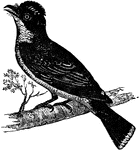
King-bird
Tyrannus carolinensis. King-bird. Bee-martin. No olive nor decided yellow. Only outer primaries obviously…
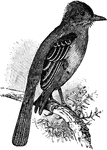
Great Crested Flycatcher
"Myiarchus crinitus. Great Crested Flycatcher. Decidedly olivaceous above, a little browner on head,…
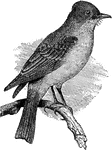
Pewit Flycatcher
"Sayiornis fusca. Pewit Flycatcher. Water Pewee. Pewit. Phaebe. Dull olivaceous-brown, the head much…

Northern Black Cloud Swift
"Nephaecetes niger borealis. Northern Black Cloud Swift. Entire plumage sooty-black, with slight greenish…

Blue-headed Saw-bill
"Momotus caeruleiceps. Blue-headed Saw-bill. The central tail-feathers are long-exserted, and spatulate…
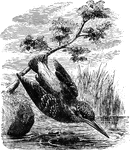
Common Kingfisher
Alcedo Ispida. European Kingfisher. Small bird, upper parts blue-green; under parts orange; rump and…
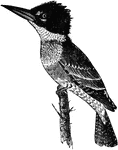
Belted Kingfisher
"Ceryle alcyon. Belted Kingfisher. Upper parts, broad pectoral bar, and sides under the wings, dull…
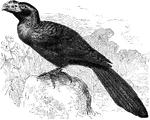
Smooth-billed Ani
"Crotophaga ani. Smooth-billed Ani. Black Witch. Savanna Blackbird. Bill smooth or with a few transverse;…
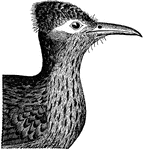
Ground Cuckoo Head
"Geococcyx californianus. Ground Cuckoo. Chaparral Cock. Road Runner. Snake Killer. Paisano. Most of…
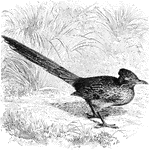
Ground Cuckoo
"Geococcyx californianus. Ground Cuckoo. Chaparral Cock. Road Runner. Snake Killer. Paisano. Most of…
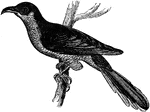
Small Yellow-billed Cuckoo
"Coccygus americanus. Yellow-billed Cuckoo. Bill black, extensively yellow below and on the sides of…

Yellow-billed Cuckoo
"Coccygus americanus. Yellow-billed Cuckoo. Bill black, extensively yellow below and on the sides of…
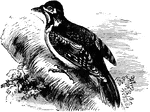
European Spotted Woodpecker
"Picus major. European Spotted Woodpecker. Bill more or less nearly equal to head in length, stout,…

Ivory-billed Woodpecker
"Campephilus principalis. Ivory-billed Woodpecker. Glossy blue-black; a stripe down side of neck, one…
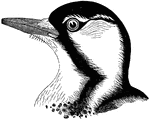
Red-cockaded Woodpecker
"Picus borealis. Red-Cockaded Woodpecker. Body spotted and crosswise banded, but not streaked. Head…

Downy Woodpecker
"Picus pubescens. Downy Woodpecker. Usually 6-7 long; outer tail-feathers barred with black and white.…
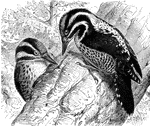
Three-toed Woodpeckers
"Picoïdes. Three-toed Woodpeckers. Three-toed: the hallux (1st toe) absent, the 4th toe reversed…
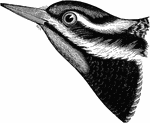
Yellow-bellied Woodpecker
"Sphyropicus varius. Yellow-bellied Woodpecker. Male: Crown crimson, bordered all around with black;…
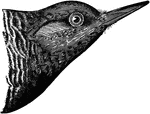
Brown-headed Woodpecker
"Sphyropicus thyroides. Brown-headed Woodpecker. Black-breasted Woodpecker. Red-throated Woodpecker.…
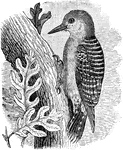
Red-bellied Woodpecker
"Centurus carolinus. Red-bellied Woodpecker. Whole crown and nape scarlet in the male; nape only so…

Red-headed Woodpecker
"Melanerpes erythrocephalus. Red-headed Woodpecker. Tricolor. Adult: Beautifully tricolor with "the…
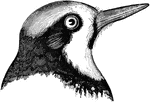
Californian Woodpecker
"Melanerpes formicivorus bairdi. Californian Woodpecker. Glossy blue-black; rump, bases of all the quills,…
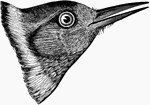
Lewis' Woodpecker Head
"Asyndesmus torquatus. Lewis' Woodpecker. Lared Woodpecker. Adult: Upper parts, including wings and…
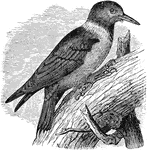
Lewis' Woodpecker
"Asyndesmus torquatus. Lewis' Woodpecker. Lared Woodpecker. Adult: Upper parts, including wings and…
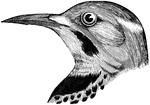
Flicker
"Colaptes auratus. Golden-winged Woodpecker. Pigeon Woodpecker. Flicker. Yucker. High-holder. Back and…
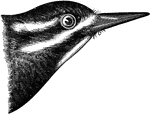
Red-headed Woodpecker
"Sphyropicus thyroides. Brown-headed Woodpecker. Black-breasted Woodpecker. Red-throated Woodpecker.…
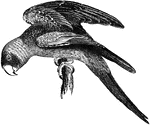
Carolina Parroquet
"Conuropsis carolinensis. Carolina Parroquet. Green; head yellow; face red; bill white; feet flesh-color;…

Carolina Parroquets
"Conuropsis carolinensis. Carolina Parroquet. Green; head yellow; face red; bill white; feet flesh-color;…
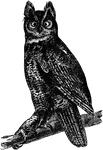
Great Horned Owl
"Bubo virginianus. Great Horned Owl. Hoot Owl. Cat Owl. Distinguished by its large size and conspicuous…
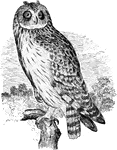
Short-eared Owl
"Asio accipitrinus. Short-eared Owl. Marsh Owl. Ear-tufts inconspicuous, much shorter than middle toe…
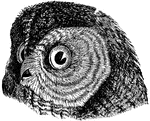
Barred Owl
"Strix nebulosa. Barred Owl. Hoot Owl. American Wood Owl. Toes fully feathered, nearly or quite to the…
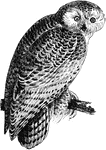
Snowy Owl
"Nyctea scandiaca. Snowy Owl. Pure white, spotted and barred with brownish-black markings, wholly indeterminate…
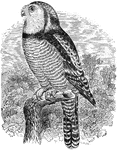
Hawk Owl
"Surnia funerea. American Hawk Owl. Day Owl. Bill and eyes yellow; claws brownish-black. Upper parts…
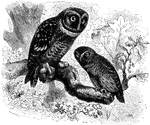
Saw-whet and Sparrow Owls
"Nyctala - Saw-whet Owls. Skull and ear-parts highly unsymmetrical, the the latter of great size, and…

Harrier Ear Parts
"Circinae. Harriers. Face surrounded with an incomplete ruff (as in most owls); orifice of ear about…
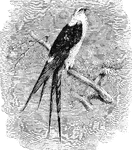
Swallow-tailed Kite
"Elanoides forficatus. Swallow-tailed Kite. Adult: Head, neck, band on rump, and entire under parts,…
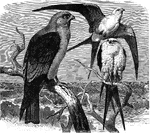
Two Swallow-tail and One Mississippi Kites
Two Swallow-tail and One Mississippi Kite. "Ictinia subcaerulea. Mississippi Kite. General plumage plumbeous…
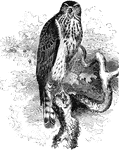
American Goshawk
"Astur atricapillus. American Goshawk. Blue Hen Hawk (adult). Chicken Hawk (young). Adult: Above, dark…
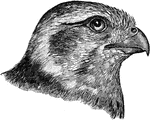
Prairie Falcon Head
"Falco mexicanus. American Lanner Falcon. Prairie Flacon. A medium-sized species, distinguished from…
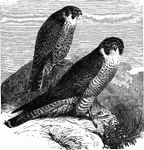
Two Lanner Falcon
"Falco mexicanus. American Lanner Falcon. Prairie Flacon. A medium-sized species, distinguished from…

Falcons
"Falcons. Bill furnished with a sharp tooth and notch near the end of the cutting edge of the upper…
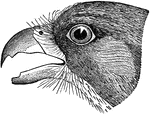
Sparrow Hawk
"Falco sparverius. Rusty-crowned Falcon. Sparrow Hawk. Adults: Crown ashy-blue, with a chestnut patch,…

Caracaras
"Polyborus auduboni. Common Caracara. General color blackish, the throat, neck all around, and more…

Bald Eagle
"Haliaetus leucocephalus. White-headed Sea Eagle. "Bald Eagle." "Bird of Washington". Adult: Dark brown;…
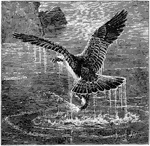
Osprey
An Osprey catching a fish. "Pandion haliaetus. Fish Hawk. Osprey. Adult. dark vandyke- brown, blackening…
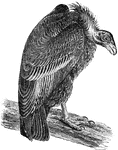
California Condor
"Pseudogryphus californianus. California Condor. Adult: Blackish, the feathers with browner tips or…
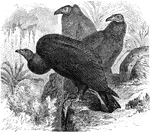
Turkey Buzzard
"Cathartes aura. Turkey Buzzard. Blackih-brown, grayer on the wing-coverts; quills black, ashy-gray…
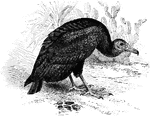
Black Vulture
"Catharista atrata. Black Vulture. Carrion Crow. Adult: Entire plumage, including skin of head, and…

Passenger Pigeon
"Ectopistes migratorius. Passenger Pigeon. Wild Pigeon Adult: Upper parts, including head all around,…
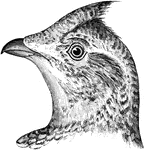
Sharp-tailed Grouse
"Pediaecetes phasianellus Columbianus. Common Sharp-tailed Grouse. Upper parts closely and pretty evenly…
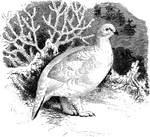
Willow Ptarmigan in Winter
"Lagopus albus. Willow Grouse. Willow Ptarmigan. Bill very stout and convex, its depth at base as the…
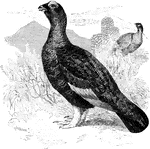
Willow Ptarmigan in Summer
"Lagopus albus. Willow Grouse. Willow Ptarmigan. Bill very stout and convex, its depth at base as the…

White-tailed Ptarmigan
"Lagopus leucurus. White-tailed Ptarmigan. Rocky Mountain Snow Grouse. Male and Female in winter: Entirely…
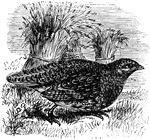
European Partridge
"Coturnix. Bill smaller and much slenderer than that of any of the foregoing genera of Odontophorinae;…

Quail Foot and Bill
"Ortyx. Quail. Outstretched feet reaching beyond end of tail. Bill black or blackish-brown. " Elliot…